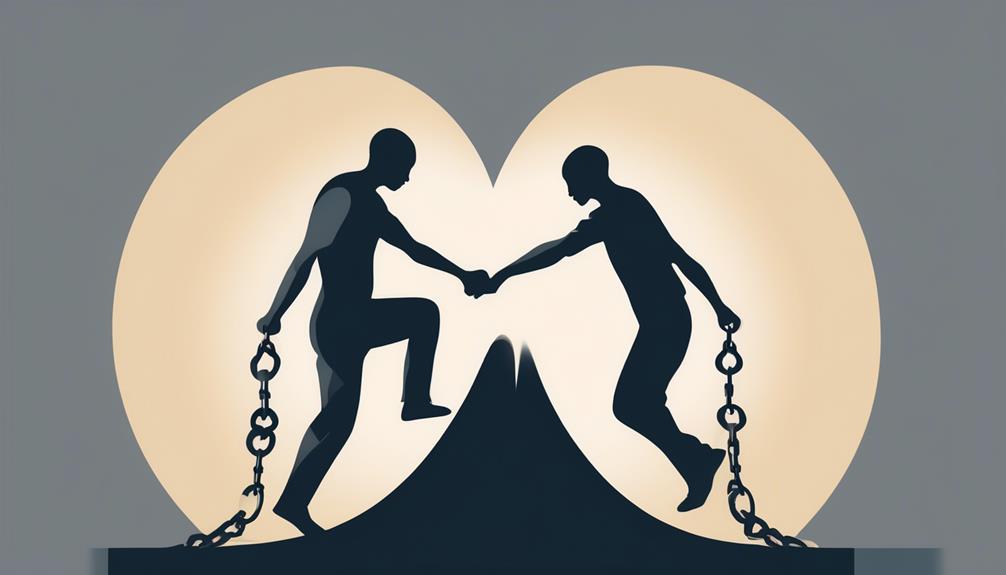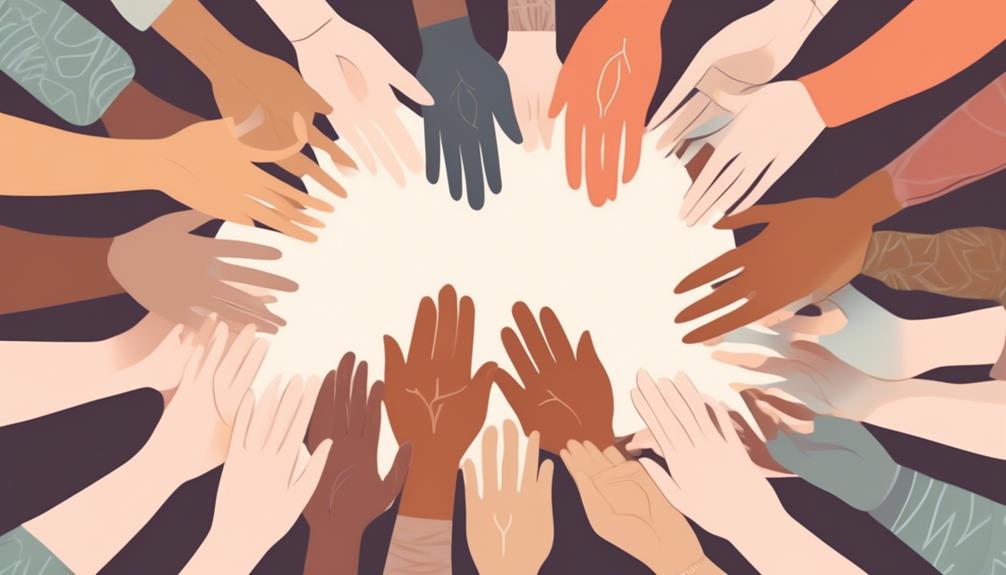Unveiling the Hidden Scars: A Comprehensive Guide to Understanding Emotional Abuse
Imagine being trapped in a cage, where the walls are invisible but the pain is suffocating. This is the essence of emotional abuse, a deeply damaging form of mistreatment that leaves no visible scars but scars the soul.
It is a silent predator that preys upon one’s emotions, using manipulation and control as its weapons. But what exactly is emotional abuse? How can you recognize its signs and symptoms? And most importantly, how can you break free from its clutches?
In the following discussion, we will explore the harrowing reality of emotional abuse and provide you with the knowledge and tools to reclaim your emotional well-being.
Types of Emotional Abuse

There are various types of emotional abuse that can occur in relationships, causing significant harm to your mental and emotional well-being.
One common form of emotional abuse is through manipulation tactics. Manipulation tactics involve the use of deceit, lies, and distorted information to control and influence your thoughts, emotions, and behaviors. This can include guilt-tripping, playing mind games, and using emotional blackmail to manipulate your actions.
Another type of emotional abuse is gaslighting. Gaslighting techniques involve the manipulation of your perception of reality, making you doubt your own thoughts, feelings, and memories. The abuser may deny or twist events, dismiss your feelings, and make you question your sanity. Gaslighting can leave you feeling confused, isolated, and constantly second-guessing yourself.
It’s important to recognize these types of emotional abuse and seek support to protect your well-being.
Signs and Symptoms of Emotional Abuse

Recognizing emotional abuse can be challenging, but there are clear signs and symptoms that can help you identify if you’re experiencing this type of mistreatment in your relationship. Here are some warning signs to watch out for:
- Constant criticism and belittling: If your partner constantly puts you down, criticizes your every move, or makes you feel worthless, it may be a sign of emotional abuse.
- Control and manipulation: Emotional abusers often use psychological manipulation to control their victims. They may isolate you from friends and family, control your finances, or make all the decisions in the relationship.
- Gaslighting: Gaslighting is a form of psychological manipulation where the abuser makes you doubt your own reality. They may deny things they’ve said or done, blame you for their behavior, or twist the truth to make you question your sanity.
- Emotional withdrawal: If your partner consistently withholds affection, refuses to communicate, or gives you the silent treatment as a way to punish or manipulate you, it may be a sign of emotional abuse.
Long-Term Effects of Emotional Abuse

The long-term effects of emotional abuse can have a profound impact on your mental and emotional well-being. One of the most significant consequences is the psychological trauma that stems from enduring emotional abuse. Constant criticism, manipulation, and belittlement can leave lasting scars on your psyche, leading to anxiety, depression, and even post-traumatic stress disorder (PTSD).
Additionally, emotional abuse can severely impact your self-esteem and self-worth. The constant undermining and devaluing can make you doubt your abilities, worthiness, and value as a person. Over time, this can lead to feelings of worthlessness, insecurity, and a distorted self-image.
It can be challenging to rebuild your self-esteem and regain a healthy sense of self-worth after experiencing emotional abuse. Seeking therapy and support can help you heal and regain control over your emotions and thoughts.
Breaking the Cycle of Emotional Abuse

To break the cycle of emotional abuse, it’s crucial to establish boundaries and assertively communicate your needs and expectations.
Here are four steps to help you in the healing process and setting boundaries:
- Recognize the abuse: Understand that emotional abuse isn’t acceptable and you deserve to be treated with respect and kindness.
- Establish clear boundaries: Clearly define what behavior is acceptable and what’s not. Communicate your boundaries to the abuser and stick to them.
- Practice self-care: Prioritize your well-being by engaging in activities that bring you joy and relaxation. Surround yourself with supportive friends and family.
- Seek professional help: Consider therapy or counseling to heal from the emotional wounds and learn healthy coping mechanisms.
Seeking Help and Support for Emotional Abuse

Once you have established your boundaries and begun the healing process, it’s important to understand the resources available to seek help and support for emotional abuse. Support groups can be a valuable source of comfort and understanding, as they provide a safe space to share experiences and learn from others who’ve gone through similar situations. These groups offer a sense of community and can help validate your feelings.
Additionally, therapy options can be beneficial in overcoming the emotional scars of abuse. Individual therapy allows you to work one-on-one with a trained professional who can guide you through the healing process. Group therapy, on the other hand, offers the opportunity to connect with others who’ve experienced emotional abuse and learn coping strategies together.
Conclusion
In conclusion, understanding emotional abuse is crucial in order to recognize the signs and symptoms, break the cycle, and seek help and support.
By identifying the different types of emotional abuse and its long-term effects, individuals can take necessary steps to protect themselves and others.
It’s important to remember that no one deserves to be emotionally abused, and seeking assistance from professionals or support networks can provide the necessary tools for healing and recovery.